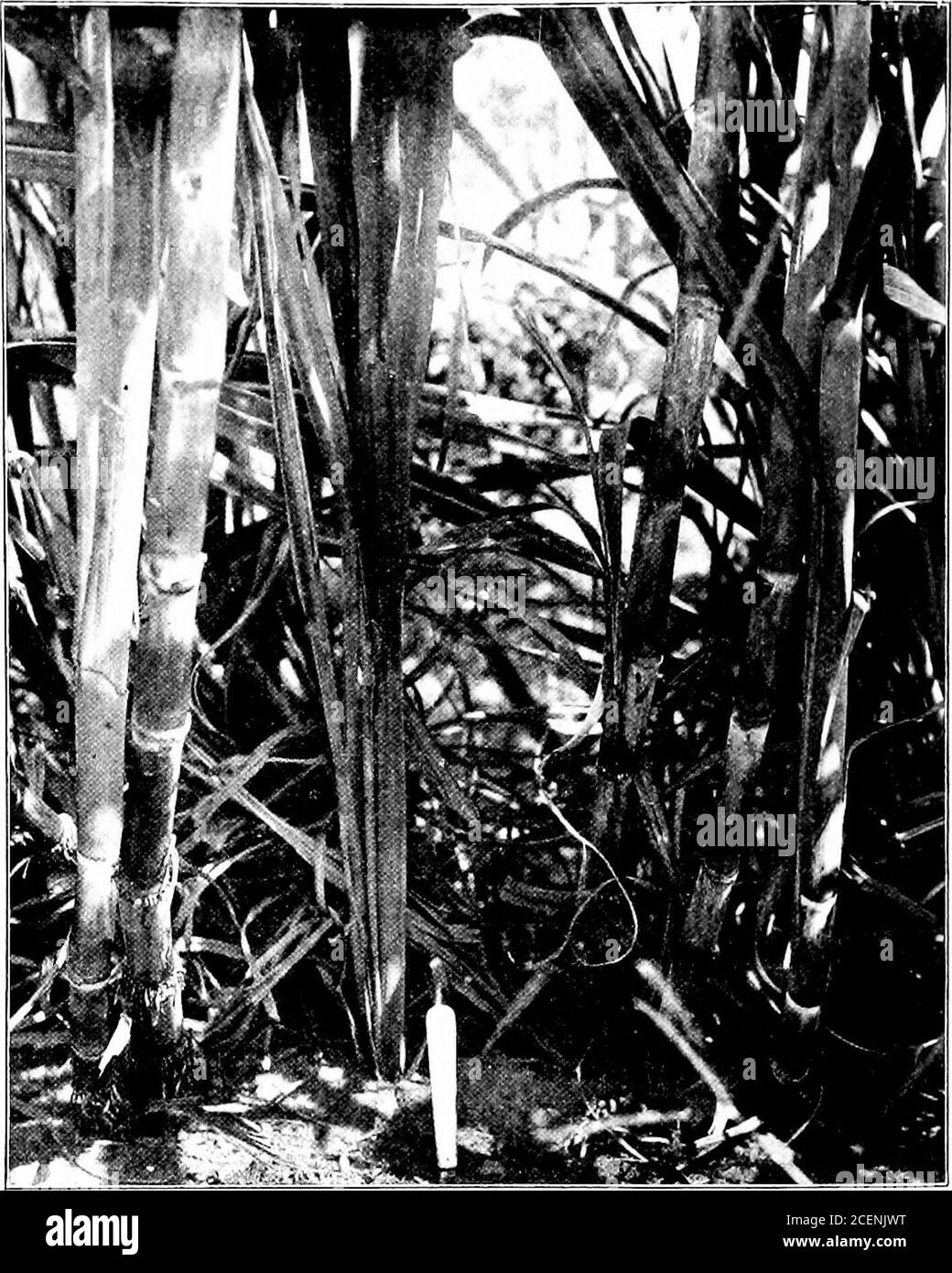. Agriculture for southern schools. ther north, the roots usually do not livethrough the winter, so that stalks of cane have to beplanted every year. Varieties of sugar cane. — Sugar cane forms seeds invery warm countries, but not in the Southern states. Thechief use of these seeds is to start new varieties. Plantsgrown from seeds are more unlike their parents than areplants grown from buds. When a seedling is better thanits parent, it is prized as a new variety and is increased byplanting canes (Fig. 103). The variety most generally grown is the red or purplecane, so named from the color of t

Image details
Contributor:
Reading Room 2020 / Alamy Stock PhotoImage ID:
2CENJWTFile size:
7.1 MB (523.4 KB Compressed download)Releases:
Model - no | Property - noDo I need a release?Dimensions:
1414 x 1767 px | 23.9 x 29.9 cm | 9.4 x 11.8 inches | 150dpiMore information:
This image is a public domain image, which means either that copyright has expired in the image or the copyright holder has waived their copyright. Alamy charges you a fee for access to the high resolution copy of the image.
This image could have imperfections as it’s either historical or reportage.
. Agriculture for southern schools. ther north, the roots usually do not livethrough the winter, so that stalks of cane have to beplanted every year. Varieties of sugar cane. — Sugar cane forms seeds invery warm countries, but not in the Southern states. Thechief use of these seeds is to start new varieties. Plantsgrown from seeds are more unlike their parents than areplants grown from buds. When a seedling is better thanits parent, it is prized as a new variety and is increased byplanting canes (Fig. 103). The variety most generally grown is the red or purplecane, so named from the color of the stem. The stripedor ribbon cane that is sometimes grown is so named be-cause it is streaked with irregular stripes of white. Greencane is also grown to some extent. Some of the newervarieties introduced by the Louisiana Experiment Stationare proving superior to all of the old varieties and are dis-placing them in Louisiana. Japanese cane is one of thehardiest varieties and can be grown for syrup farther north 1 156 AGRICULTURE. Courfcsy La. Agr. Expt. StatiOQ Fig. 103. — SuG.iR Cane grown from SeedIn this way new varieties originate. than the other kinds. It throws up many slender canes orsuckers from every joint. It is sometimes profitably usedas a food for hogs and other live-stock. Since sugar cane grows from the succulent buds on the SUGAR CANE 157 canes planted, these buds must be kept through the winter insuch condition that they will neither freeze, dry, nor shrivel.In Louisiana a part of the cane is planted in the fall, the